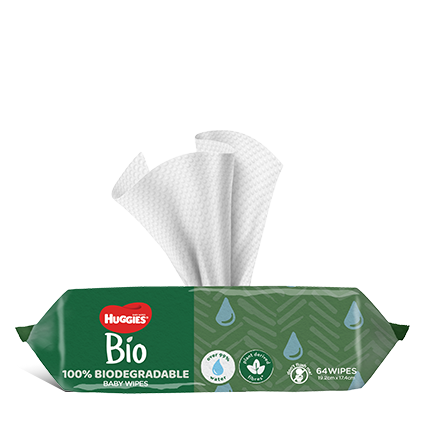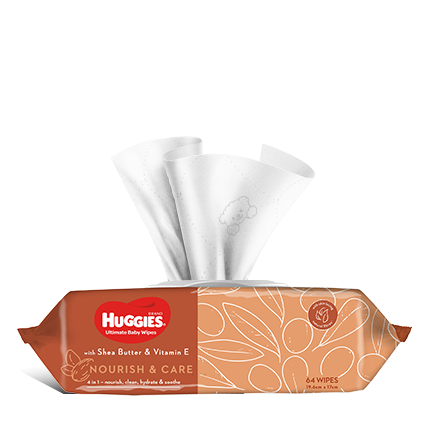Baby Health and Care
Even experienced parents get worried over what may be a minor baby health care scare.
Jump to a topic in this section
Baby Health
The worst thing about colds and the flu is how quickly they spread through the family.
Our handy reference table for common childhood illnesses will help you to work out your best course of action when your child is unwell.
Follow these Sneeze Safe Guidelines from KLEENEX and help to keep your family safe from colds and flu.
Babies can’t tell you when they aren’t well – and that’s what can be worrying.
Reflux
The term silent reflux is really a misnomer as a baby who experiences reflux is usually not silent and will often cry from discomfort.
Colic is very common in young babies, though there is no sure reason as to what causes it or why some babies get it and some don’t.
Here are some organizations that may be able to offer you further information and support for you and your baby.
Every parent is desperate to find some way to help their baby who suffers from reflux.
You may read some websites or hear individuals suggest that tummy sleeping is better for babies who suffer from reflux, however SIDS Australia recommend that the supine position or back sleeping is the best way to sleep your baby from birth to prevent the risk of SIDS, even for those babies that suffer from reflux.
Baby Immunisation
The process of immunisation protects your child from some serious diseases that are in our community.
This immunisation chart is applicable in Australia as at July 2018.
Occasionally, local or adverse reactions to vaccines can occur.
Whooping Cough, otherwise known as pertussis, is a very serious and life threatening disease.
Over the cooler months of the year, colds and influenza (flu) are always more common.
Teething
Amber teething necklaces have become increasingly popular in just the last couple of years since they were introduced to the Australian and New Zealand markets, and websites devoted to amber bead necklace sales have sprung up everywhere.
It is such an exciting moment to see the first tooth pop out from your precious one’s gums.
The positive side to your baby teething is they will be able to chomp on real foods soon!
Whether you think your baby is teething, or you would like to know whether they are, or you just want to be prepared, here is a quick guide to the top things to know when your baby or child is teething.
Medical Conditions and Disorders
People who have been touched in some way by a genetic childhood disorder via a friend or family member will often find comfort in hearing about the challenges and triumphs of others who have had similar experiences.
Nadena was born with Williams Syndrome, a chromosome disorder where she has a micro-deletion on chromosome 7.
Alexis was a normal, happy baby until aged 3 months when her weight plateaued.
Madison was born with Cystic Fibrosis, a genetic disease that affects a number of organs in the body (especially the lungs and pancreas) by clogging them with thick, sticky mucus.
Our family is affected by a genetic disorder called Wiskott Aldrich Syndrome which is a rare X-linked recessive disease characterized by eczema, thrombocytopenia (low platelet count) and immune deficiency.
Bath Time
When your baby is first born it is easier to use a special baby bath or simply use the
laundry sink.
Here are a few bath time tips to keep in mind no matter how old your child is:
Your baby will be able to sit up in the water with your help, or you could use a special support that allows him to remain upright which of course means your hands will be free.
Baby Skin
Why Bonnie Anderson, first-time mum, singer, songwriter, actor and self-confessed organisation queen – is obsessed with her gorgeous son Bobby’s delicate skin.
We know baby’s skin is delicate, especially during the early stages of development. That’s why Huggies® Newborn Nappies are designed to
deliver gentle protection for babies. Every component of the nappy is designed thoughtfully to help keep babies’ skin clean and healthy.
Baby’s skin is the primary defense against the outside world, providing protection from physical, chemical, and biological dangers. It also
helps regulate babies’ body temperature and contains nerve cells that allow babies to experience touch.
Huggies® Newborn and Infant Nappies’ clinically proven layer* has a skin protecting application comprising of zinc oxide, commonly found in
nappy rash creams, and a pH balancer. This layer works to help deliver protection against irritants from urine and poop that can irritate the
skin and alter pH.
If this hasn’t already happened to you, it’s sure to happen soon: you open your baby’s nappy and are confronted with a red, angry rash. You likely feel upset and guilty that your baby is uncomfortable. However, Nappy rash is normal and is one of the most common skin conditions babies face.
Baby Massage
As well as the fact that baby's love it (and mum's don't seem to have any complaints either), daily massage has
been shown to have several positive effects. Here are just a few:
Baby massage has a great number of benefits and some of them will be completely unique to you and your own baby.
For a full body massage you will need 30 minutes of uninterrupted time.
Every day we ‘massage’ our children without even realising that we are doing it.
Recommended Topics
Check out these other topics you might like
Join our Huggies Club
For every milestone, big or small. We got you, baby.

Expert advice

Offers & Promos

Exclusive offers
Try Our Tools
Discover our most popular tools to help
you along the way
Promotions & Offers
Explore our exciting promotions.
Win FREE nappies for 6 months!
Join the Huggies Club for your chance to WIN






























































































